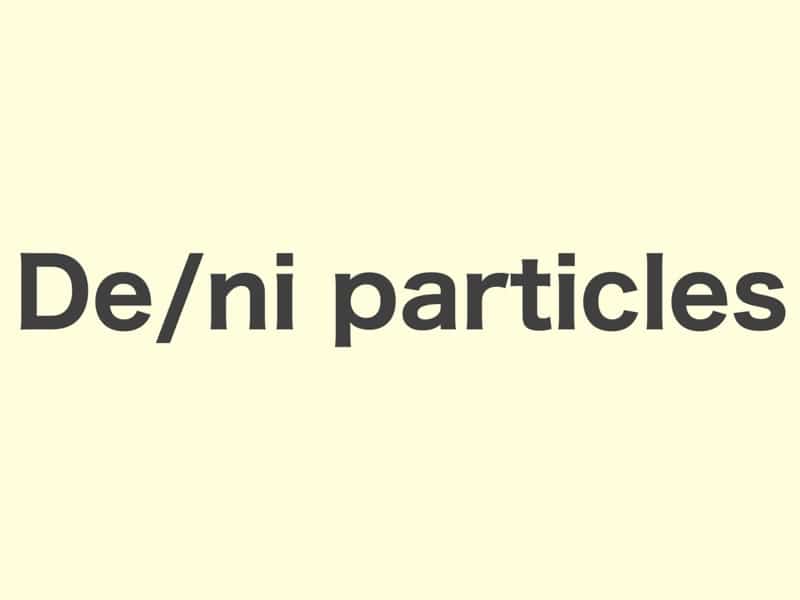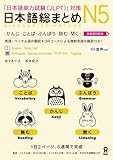In Japanese, the particles で (de) and に (ni) are both used to describe location, but each serves a different purpose. Understanding the distinctions between these two particles is essential for clear and natural Japanese expression. Let’s explore their differences with practical examples.
で (de) in Japanese
Here are some examples of using で (de) to show the location where an action takes place in Japanese:
- 図書館で本を読みます。(としょかんでほんをよみます)
toshokan de hon o yomimasu
“I read books at the library.” - レストランで昼ごはんを食べます。(レストランでひるごはんをたべます)
resutoran de hirugohan o tabemasu
“I eat lunch at the restaurant.” - 家でテレビを見ます(いえでテレビをみます)
ie de terebi o mimasu
“I watch TV at home.” - 学校で勉強します(がっこうでべんきょうします)
gakkō de benkyō shimasu
“I study at school.”
In each of these examples, で (de) is used to indicate the place where an action occurs. This particle is commonly used to describe locations where people are actively doing something, such as studying, eating, or watching TV.
JLPT Textbook Recommendations
どこで (dokode) to Ask “Where” Questions
In Japanese, どこで (dokode) is used to ask where an action takes place. The で (de) particle, when combined with どこ (doko, meaning “where”), indicates the location of an action.
- どこで勉強しますか。(どこでべんきょうしますか)
dokode benkyō shimasu ka.
“Where do you study?” - どこで昼ごはんを食べますか。(どこでひるごはんをたべますか)
dokode hirugohan o tabemasu ka.
“Where do you eat lunch?” - どこで友達と遊びますか。(どこでともだちとあそびますか)
dokode tomodachi to asobimasu ka.
“Where do you hang out with friends?” - どこで仕事をしますか。(どこでしごとをしますか)
dokode shigoto o shimasu ka.
“Where do you work?” - どこで日本語を勉強しましたか。(どこでにほんごをべんきょうしましたか)
dokode nihongo o benkyō shimashita ka.
“Where did you study Japanese?”
に (ni) in Japanese
In Japanese, the particle に (ni) has a versatile range of uses. One key function is to indicate the location of existence or direction when combined with verbs like “to be” or “to go.” It also marks specific points in time.
Location of Existence
When you want to indicate where someone or something exists, に (ni) is used with verbs such as あります (arimasu, “to be” for inanimate objects) or います (imasu, “to be” for animate objects).
- 公園にいます。(こうえんにいます)
kōen ni imasu
“I am at the park.” - 部屋にテレビがあります。(へやにテレビがあります)
heya ni terebi ga arimasu
“There is a TV in the room.”
Direction or Destination
Use に (ni) to indicate where someone or something is going. It is used with verbs like 行きます (ikimasu, “to go”), 来ます (kimasu, “to come”), and 帰ります (kaerimasu, “to return”). You can also use へ (e) for this purpose.
- 学校に行きます。(がっこうにいきます)
gakkō ni ikimasu
“I am going to school.” - 家に帰ります。(いえにかえります)
ie ni kaerimasu
“I will return home.” - 友達が家に来ます。(ともだちがいえにきます)
tomodachi ga ie ni kimasu
“My friend is coming to my house.”
どこに (dokoni) to Ask “Where” Questions
You can use どこに when you want to know the specific place someone is going or where something is located. It typically comes at the beginning of the question.
- どこに行きますか?(どこにいきますか)
dokoni ikimasu ka.
“Where are you going? - 先生はどこにいますか?(せんせいはどこにいますか)
sensei wa dokoni imasu ka.
“Where is teacher?” - どこに住んでいますか?(どこにすんでいますか)
anata wa dokoni sundeimasu ka.
“Where do you live?”




コメント